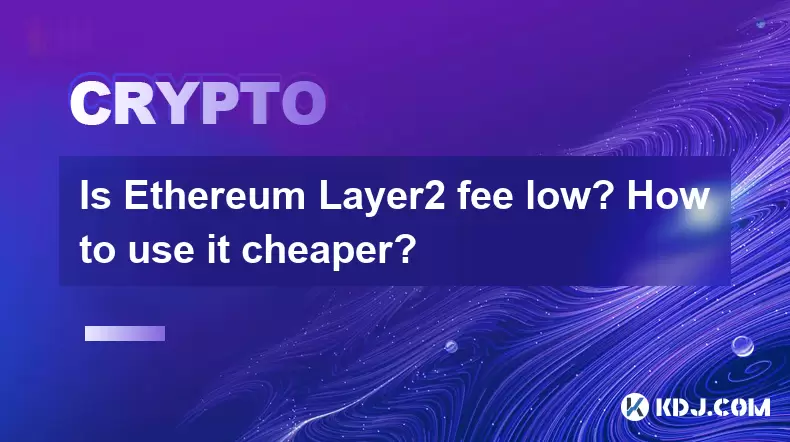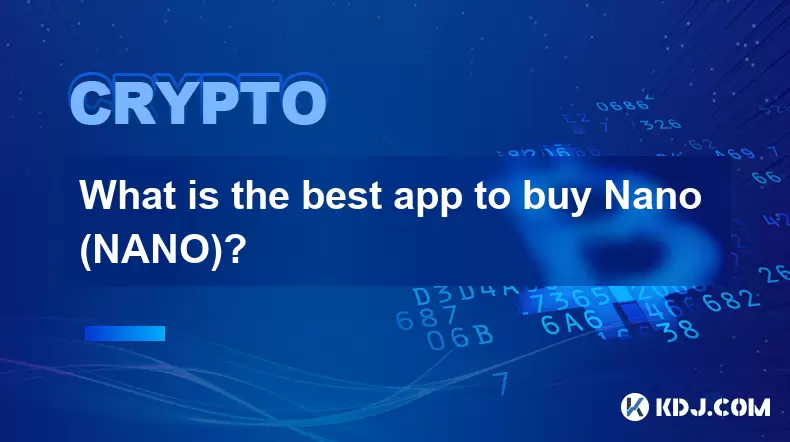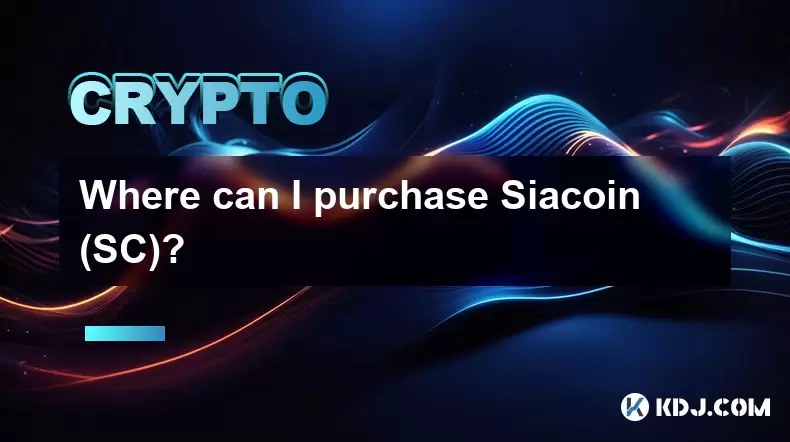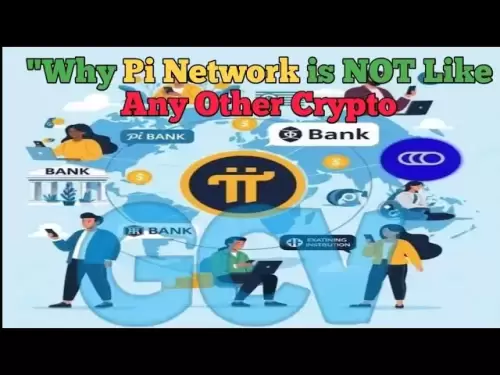-
 Bitcoin
Bitcoin $118300
1.01% -
 Ethereum
Ethereum $4215
0.69% -
 XRP
XRP $3.198
-3.83% -
 Tether USDt
Tether USDt $1.000
-0.01% -
 BNB
BNB $803.4
-0.53% -
 Solana
Solana $180.3
-0.67% -
 USDC
USDC $0.9998
-0.01% -
 Dogecoin
Dogecoin $0.2334
-1.49% -
 TRON
TRON $0.3394
0.86% -
 Cardano
Cardano $0.7980
-1.45% -
 Chainlink
Chainlink $22.19
6.65% -
 Hyperliquid
Hyperliquid $43.41
0.13% -
 Stellar
Stellar $0.4407
-3.13% -
 Sui
Sui $3.843
-2.24% -
 Bitcoin Cash
Bitcoin Cash $564.7
-3.74% -
 Hedera
Hedera $0.2588
-3.41% -
 Ethena USDe
Ethena USDe $1.001
0.00% -
 Avalanche
Avalanche $23.64
-3.37% -
 Litecoin
Litecoin $120.0
-4.01% -
 Toncoin
Toncoin $3.342
-1.11% -
 UNUS SED LEO
UNUS SED LEO $9.038
0.60% -
 Shiba Inu
Shiba Inu $0.00001347
-0.81% -
 Uniswap
Uniswap $10.69
-4.58% -
 Polkadot
Polkadot $4.034
-1.30% -
 Dai
Dai $1.000
0.01% -
 Bitget Token
Bitget Token $4.472
-1.52% -
 Cronos
Cronos $0.1571
-3.04% -
 Pepe
Pepe $0.00001207
-2.21% -
 Monero
Monero $273.8
-3.19% -
 Ethena
Ethena $0.7520
2.75%
Is Ethereum Layer2 fee low? How to use it cheaper?
Ethereum Layer 2 solutions like Optimism, Arbitrum, and Polygon offer significantly lower fees than the mainnet, with transactions often costing less than a cent.
May 08, 2025 at 03:56 am

The question of whether Ethereum Layer 2 solutions offer lower fees and how to use them more economically is a topic of great interest within the cryptocurrency community. Ethereum's Layer 2 solutions have been developed to address the high transaction fees and scalability issues associated with the main Ethereum network. In this article, we will delve into the specifics of Ethereum Layer 2 fees, compare them to the mainnet, and provide a detailed guide on how to use these solutions to minimize costs.
Understanding Ethereum Layer 2 Solutions
Ethereum Layer 2 solutions are protocols built on top of the Ethereum blockchain to enhance its scalability and efficiency. These solutions process transactions off the main Ethereum chain, thereby reducing congestion and lowering fees. Some popular Layer 2 solutions include Optimism, Arbitrum, and Polygon.
Layer 2 solutions work by bundling multiple transactions into a single transaction that is then settled on the Ethereum mainnet. This batching process significantly reduces the cost per transaction, making it an attractive option for users looking to save on fees.
Comparing Layer 2 Fees to Ethereum Mainnet
To understand whether Layer 2 fees are low, it's essential to compare them to the fees on the Ethereum mainnet. Ethereum mainnet fees can vary widely, often ranging from a few cents to several dollars per transaction, depending on network congestion and gas prices.
In contrast, Layer 2 fees are typically much lower. For instance, Optimism and Arbitrum usually have transaction fees that are less than a cent, while Polygon offers fees that are a fraction of a cent. These low fees make Layer 2 solutions an attractive option for users who want to perform frequent transactions without incurring high costs.
How to Use Layer 2 Solutions for Lower Fees
To take advantage of the lower fees offered by Layer 2 solutions, users need to follow a few steps to set up and interact with these networks. Here is a detailed guide on how to use Layer 2 solutions more economically:
Choose the Right Layer 2 Solution: The first step is to select a Layer 2 solution that aligns with your needs. Optimism and Arbitrum are suitable for those who want to interact with Ethereum dApps without high fees, while Polygon is ideal for those looking for a robust ecosystem with its own set of dApps.
Set Up a Wallet: You will need a wallet that supports the chosen Layer 2 solution. Popular options include MetaMask, which can be configured to work with Optimism, Arbitrum, and Polygon. To set up MetaMask for a Layer 2 network:
- Open MetaMask and click on the network dropdown menu.
- Select "Custom RPC" and enter the network details for the chosen Layer 2 solution. For example, for Optimism, you would enter:
- Network Name: Optimism
- New RPC URL: https://mainnet.optimism.io
- Chain ID: 10
- Currency Symbol: ETH
- Block Explorer URL: https://optimistic.etherscan.io
Bridge Funds to Layer 2: To use a Layer 2 solution, you need to transfer your Ethereum (ETH) from the mainnet to the Layer 2 network. This process is called bridging. Each Layer 2 solution has its own bridge:
- For Optimism, visit the Optimism Bridge at https://app.optimism.io/bridge.
- For Arbitrum, visit the Arbitrum Bridge at https://bridge.arbitrum.io/.
- For Polygon, visit the Polygon Bridge at https://wallet.polygon.technology/.
- Follow the instructions on the bridge website to transfer your ETH to the Layer 2 network.
Interact with dApps on Layer 2: Once your funds are on the Layer 2 network, you can interact with dApps that are built on or compatible with that network. For example, if you are on Optimism, you can use dApps like Uniswap or SushiSwap directly on the Optimism network.
Withdraw Funds Back to Ethereum Mainnet: If you need to move your funds back to the Ethereum mainnet, you can use the same bridge you used to deposit them. Keep in mind that withdrawals from Layer 2 to the mainnet may take some time due to the need for confirmation on the Ethereum mainnet.
Tips for Minimizing Layer 2 Fees
While Layer 2 solutions already offer lower fees than the Ethereum mainnet, there are additional strategies to further minimize costs:
Batch Transactions: Whenever possible, batch multiple transactions into a single transaction. This can be particularly useful for actions like swapping tokens or interacting with smart contracts.
Use Layer 2 Native dApps: Some dApps are built specifically for Layer 2 networks and may offer even lower fees than those that are simply compatible with Layer 2. For example, QuickSwap on Polygon is designed to take advantage of Polygon's low fees.
Monitor Gas Prices: Even on Layer 2 networks, gas prices can fluctuate. Tools like Etherscan for Layer 2 networks can help you monitor gas prices and choose the best times to execute transactions.
Leverage Layer 2 Bridges Efficiently: When using bridges to move funds between the mainnet and Layer 2, consider the timing of your transfers. Some bridges may have lower fees during off-peak hours.
Common Pitfalls to Avoid
When using Layer 2 solutions to save on fees, there are a few common pitfalls to be aware of:
Security Risks: While Layer 2 solutions are generally secure, it's essential to use reputable bridges and dApps to minimize the risk of hacks or scams.
Liquidity Issues: Some Layer 2 networks may have lower liquidity for certain tokens, which can impact the efficiency of transactions.
Withdrawal Delays: As mentioned earlier, withdrawing funds from Layer 2 to the Ethereum mainnet can take time. Plan your withdrawals accordingly to avoid unnecessary delays.
Frequently Asked Questions
Q: Can I use the same wallet for different Layer 2 solutions?
A: Yes, wallets like MetaMask support multiple Layer 2 networks. You can add different Layer 2 networks to your wallet by configuring the custom RPC settings for each network.
Q: Are there any risks associated with using Layer 2 solutions?
A: While Layer 2 solutions are designed to be secure, there are risks such as smart contract vulnerabilities and potential delays in withdrawals. It's important to use reputable platforms and stay informed about the security of the Layer 2 solution you are using.
Q: How do I know if a dApp supports a specific Layer 2 solution?
A: Most dApps that support Layer 2 solutions will clearly indicate this on their website or within the app itself. You can also check the documentation or community forums of the dApp to confirm its compatibility with a particular Layer 2 network.
Q: Can I earn rewards or staking benefits on Layer 2 networks?
A: Some Layer 2 solutions, like Polygon, offer staking opportunities where users can earn rewards. However, the availability of such features can vary between different Layer 2 networks, so it's important to research the specific network you are interested in.
Disclaimer:info@kdj.com
The information provided is not trading advice. kdj.com does not assume any responsibility for any investments made based on the information provided in this article. Cryptocurrencies are highly volatile and it is highly recommended that you invest with caution after thorough research!
If you believe that the content used on this website infringes your copyright, please contact us immediately (info@kdj.com) and we will delete it promptly.
- Cold Wallet's Hot Streak: Acquisition, User Growth, and How it Stacks Up Against Ethereum & XRP
- 2025-08-10 20:30:16
- Bitcoin, Cloud Mining, and Crypto Earnings: What's Hot in 2025?
- 2025-08-10 20:50:12
- Presale Cryptos Face-Off: BlockDAG, TOKEN6900, and the Hunt for the Next Big Thing
- 2025-08-10 20:55:12
- DeFi, Meme Coins, and 2025: Navigating the Crypto Landscape
- 2025-08-10 20:30:16
- Cardano, Returns, and Trade Deals: A New Yorker's Take
- 2025-08-10 18:50:16
- Dogwifhat's Comeback: Solana Meme Coin Mania and Beyond!
- 2025-08-10 18:30:15
Related knowledge

How to purchase Aragon (ANT)?
Aug 09,2025 at 11:56pm
Understanding Aragon (ANT) and Its PurposeAragon (ANT) is a decentralized governance token that powers the Aragon Network, a platform built on the Eth...

What is the most secure way to buy Ocean Protocol (OCEAN)?
Aug 10,2025 at 01:01pm
Understanding Ocean Protocol (OCEAN) and Its EcosystemOcean Protocol (OCEAN) is a decentralized data exchange platform built on blockchain technology,...

Where can I buy UMA (UMA)?
Aug 07,2025 at 06:42pm
Understanding UMA and Its Role in Decentralized FinanceUMA (Universal Market Access) is an Ethereum-based decentralized finance (DeFi) protocol design...

How to buy Storj (STORJ) tokens?
Aug 09,2025 at 07:28am
Understanding Storj (STORJ) and Its Role in Decentralized StorageStorj is a decentralized cloud storage platform that leverages blockchain technology ...

What is the best app to buy Nano (NANO)?
Aug 09,2025 at 03:35am
Understanding Nano (NANO) and Its Unique FeaturesNano is a feeless, instant cryptocurrency designed for fast peer-to-peer transactions. Unlike many ot...

Where can I purchase Siacoin (SC)?
Aug 08,2025 at 11:14am
Understanding Siacoin (SC) and Its Role in the Sia NetworkSiacoin (SC) is the native cryptocurrency of the Sia decentralized cloud storage platform, a...

How to purchase Aragon (ANT)?
Aug 09,2025 at 11:56pm
Understanding Aragon (ANT) and Its PurposeAragon (ANT) is a decentralized governance token that powers the Aragon Network, a platform built on the Eth...

What is the most secure way to buy Ocean Protocol (OCEAN)?
Aug 10,2025 at 01:01pm
Understanding Ocean Protocol (OCEAN) and Its EcosystemOcean Protocol (OCEAN) is a decentralized data exchange platform built on blockchain technology,...

Where can I buy UMA (UMA)?
Aug 07,2025 at 06:42pm
Understanding UMA and Its Role in Decentralized FinanceUMA (Universal Market Access) is an Ethereum-based decentralized finance (DeFi) protocol design...

How to buy Storj (STORJ) tokens?
Aug 09,2025 at 07:28am
Understanding Storj (STORJ) and Its Role in Decentralized StorageStorj is a decentralized cloud storage platform that leverages blockchain technology ...

What is the best app to buy Nano (NANO)?
Aug 09,2025 at 03:35am
Understanding Nano (NANO) and Its Unique FeaturesNano is a feeless, instant cryptocurrency designed for fast peer-to-peer transactions. Unlike many ot...

Where can I purchase Siacoin (SC)?
Aug 08,2025 at 11:14am
Understanding Siacoin (SC) and Its Role in the Sia NetworkSiacoin (SC) is the native cryptocurrency of the Sia decentralized cloud storage platform, a...
See all articles

























































































